 Raftery’s television documentary States of Fear.
Raftery’s television documentary States of Fear.Het verhaal van Christine Buckley is, net als de weg naar Rome, veel ouder. Vraag het Robbeknol maar.
David Quinn
Issue 391, vol.98, Autumn 2009. Dublin Jesuits Journal.
Mijn bron
The story of the Ryan Report does not begin in 1999 with Mary Raftery’s television documentary States of Fear. It begins three years before, with Louis Lentin’s documentary Dear Daughter, which told the story of Christine Buckley, who had been brought up by the Sisters of Mercy at Goldenbridge Orphanage.
Before this there had been books, such as The God Squad (1993) by Paddy Doyle, but it was Dear Daughter that really drew public attention in a major way to the issue of child abuse in institutions run by eighteen Catholic religious orders. This means that the issue of institutional abuse has now been part of the public consciousness for thirteen years.
The importance of Mary Raftery’s States of Fear is that it led to Taoiseach Bertie Ahern’s apology to victims of institutional abuse and also to the setting up of the Ryan Commission, which was originally headed by Justice Mary Laffoy. She later resigned, citing disagreements with the Department of Education. When Judge Sean Ryan became head of the Commission, he decided not to hear every single former resident who wished to be heard. Instead he would hear from a sample of 1,090 people. This would allow the Commission to finish its work within a fairly reasonable timeframe.
Public Hearings
I reported on the vast majority of public sittings of the Ryan Commission, while employed by the Irish Independent as its religious affairs correspondent. Ryan cut an impressive figure. He had the cool authoritative manner of an old-fashioned country GP. When former residents would become angry at what they were hearing, especially when the heads of the orders were giving testimony, he could almost always calm them down. When hearing evidence from the heads of the religious orders, Judge Ryan would always have about him an air of objectivity, without ever seeming to be detached from proceedings. In other words, he acted as a judge should act.
The public hearings were almost entirely dominated by the evidence of the religious orders. This is because the former residents were frequently naming names to the Commission. However, the vast majority of those being named had never been charged with an offence, let alone convicted of one. The former residents, therefore, had to be heard in private. The testimony of the religious orders was mostly very uniform. Each representative described conditions in which resources – both human and financial – were scarce. Generally, there were about thirty children for every adult. Nuns would sometimes go to bed with up to six babies in their room. There was very little time off. The regimes were based on discipline first and foremost. The institutions were run on military lines. The system was mostly impersonal.
Listening to the accounts of the various religious, I was reminded of the time I saw an old black and white film version of Jane Eyre. Eyre, of course, spends part of her childhood in an institution and in one scene we see her and the other girls being woken to the whistle, washing to the whistle, getting dressed to the whistle and marching down to breakfast to the whistle. Each child, as I recall, was also assigned a number.
The accounts also reminded me of a more recent film, Les Choristes (2004). It is set in France, just after World War II, and in an institution for boys run by lay people. The place is casually cruel and uncaring. It is assumed that the boys will overrun the school, given the slightest chance, and the emphasis is all on discipline. In one scene a teacher assumes another teacher is trying to abuse one of the boys. Nothing much is thought of this. It is only mildly frowned upon. In this school some of the teachers are more caring than others and the hero is obviously the one who founds the choir, which gives some of the boys a creative outlet that transforms them.
The total contrast between Les Choristes and films about institutional life in Ireland should be noted. Unlike those Irish films, it avoids sentimentality and is never melodramatic. Also, the sound of axes grinding cannot be heard.
The reports of Dr Anna McCabe were frequently mentioned in the testimony to the Ryan Commission. Dr McCabe was the person, in the middle of the last century, appointed by the Department of Education to inspect the schools. Some of her reports were critical. For example, one of them criticised serious shortcomings at Newtownforbes, an institution run by the Mercy Sisters, but a later report gave it a relatively clean bill of health.
The orders almost invariably expressed sorrow at some of the things that happened in their institutions. Also invariably, they reported a big increase in the number of abuse allegations they received following Bertie Ahern’s apology and the announcement that he was setting up a Redress Board, in addition to what become the Ryan Commission.
Why ‘Industrial’ Schools?The industrial school system was a legacy of the 19th century. It originated in Sweden, Switzerland and Germany and came to Ireland via Britain. In Britain such schools were often run by religious societies. Britain enjoyed a Protestant religious revival in the 19th century and Evangelicals were behind numerous legal reforms.
Some of those reforms were aimed at the care of children. Organisations like Barnardos and the Society for the Prevention of Cruelty to Children were founded in this era. The industrial schools were aimed specifically at ‘solving’ the problem of street children. Reports from the time say that some cities in England had hundreds, if not thousands, of vagrant children. Cities like London were growing rapidly and were often very overcrowded; tenements frequently had many large families living in one or two room flats.
Many city children quickly turned to crime as the only way they could find of keeping body and soul together (think the Artful Dodger in Oliver Twist) and the common remedy was to put them in adult prisons. The industrial schools offered an alternative to this, a terrible alternative as it turns out. But the intent was to keep such children out of prison and off the streets, to feed and house them and train them for work when they left the schools – hence the name ‘industrial’ schools.
In Ireland, the religious orders ended up running the vast majority of industrial schools and orphanages. Irish Catholics feared the schools would otherwise be used to convert the children to Protestantism, and the religious offered a cheap alternative to lay staff, however poorly they might be paid.
Unfortunately, we now know that, even if the industrial schools were well run, they still would not have been fit places for children. Institutions never are, especially when they are under-staffed and under-funded. An institution can never provide a substitute for a loving family and that is an unavoidable and unalterable fact.
However, in many cases the institutions were appallingly run and physical, sexual and emotional abuses, as well as neglect, were commonplace. This is made abundantly clear by the Ryan Report.
The Ryan Report, of course, dominated the news headlines here for several weeks after its publication. The imprisonment of Frank Dunlop, the revelation of huge debts at Anglo-Irish Bank, and even the local and European elections only slightly distracted media and public attention from it. It also made headlines overseas: Al Jazeera covered it; a German newspaper reported that Ireland had run a series of ‘terror camps’ for children for years. No mention was made of the fact the Germany also had its industrial schools.
The Numbers
As mentioned, a total of 1,090 former residents of the institutions reported to the Ryan Commission. Between them, they named 800 alleged abusers in over 200 institutions. But there was very wide variation from institution to institution in terms of the amount of abuse taking place in each of them, something that the executive summary of the Ryan Report, which is what most journalists will have read, did not make clear. For example, fully 50 per cent of physical abuse reports and 64 per cent of the sex abuse reports heard by the Commission that involved boys, related to four of the boys institutions. The same applies to the girls’ institutions. Three schools account for almost 40 per cent of the physical abuse reports, or 48 reports each, while 19 schools had an average of 2.5 reports each.
Sexual abuse was also far worse in the boys’ institution than in the girls’, which is probably to be expected. In the girls’ institutions, sex abuse was normally perpetrated by outside workmen, or by visiting priests or religious, or by foster families, with whom the girls occasionally stayed.
A relative handful of individuals accounted for a disproportionate share of the complaints. For example: a total of 241 female religious were named as physical abusers. However, four of these were named by 125 witnesses, and 156 Sisters were named by one witness each. In total, of the 800 religious and others named as abusers, half were named by only one person.
It is also worth noting that an institution only received a special chapter in the Ryan Report if it was the subject of more than 20 complaints of abuse. Sixteen institutions, out of the dozens run by the orders, had more than 20 complaints made against them.
When I first reported the above figures in the Irish Catholic and the Irish Independent, I was accused by a handful of people (fewer than I had expected) of ‘playing the numbers game’. But surely numbers matter immensely? If they do not, then why did numbers feature so heavily in the Ryan Report and in the subsequent media coverage of it, and in the debates about it? In the North, for example, it is not immaterial whether 300 or 3,000 people died in the ‘Troubles’.
If I were a member of an order that ran those institutions that were relatively better run than some of the others, I would want people to know this. I would regard it as particularly unfair and unjust if every institution was universally regarded as being as terrible as the very worst of the institutions.
A Gulag?
It may seem a rather strange analogy to use at this point, but I think here of Alexander Solzhenitsyn’s novel First Circle (1968). The industrial schools have been compared with the extermination camps of Hitler’s Germany. I will merely compare them with the Gulag, though I think even this is over-the-top. First Circle derives its name from Dante’s Inferno, in which Dante famously divides Hell into nine circles, with the ninth circle being reserved for the very worst of the damned and the first circle for the virtuous pagans who did not know Christ. Within the Gulag, there were camps that endeavoured to treat their inmates relatively humanely. Scientists and others useful to the Soviet Union were kept in these. The inmates referred to their camps as the First Circle. They knew other camps were much, much worse.
The industrial school system contained intrinsic flaws, described above, which meant that even the best of them were not fit places for children. But within this desperately flawed system there was a great deal of variation, and some schools were relatively humane. The comparison with the Gulag is flawed, ultimately because, even in theory, the Gulag was never intended for the betterment of anyone and many people were placed in the system in the full knowledge that they would die there.
In truth, there is nothing with which our industrial school system can properly be compared, except other institutions for children. We know, for example, that the Catholic religious orders ran similar institutions in such places as Australia and Canada and that they were awful as well. We also know that institutions run by other churches in countries like Canada were terrible. In fact, some Anglican dioceses in Canada have been bankrupted because of scandals in homes for children that they ran.
We do not know very much about the industrial school system in England, because it was closed years before the last of our schools shut its doors. It is doubtful whether it was much better.
From much anecdotal evidence, we can assume that English public schools were dreadful places in the past, with peer-on-peer abuse particularly bad. The amazing thing is that parents paid a lot of money to send their children to these schools, even though they know what awaited their offspring there, because it had happened to them in their day. Recently we did hear about a children’s home in Jersey, lay-run, called Haut de la Garenne. Although nobody appears to have been killed there, as early reports seemed to indicate, nonetheless, it was a terrible place. In the 1990s a dreadful child sex abuse scandal involving, among others, care workers, was revealed in Islington borough in London. Initially, it was covered up.
We can assume, given what we know about Romania and Russia, that many children’s homes in non-English speaking countries, were dreadful.
Catholic-run institutions were not worse than institutions run by other organisations. An anti-Catholic sub-text can definitely been woven into the acceptable narrative about these places, something Professor Philip Jenkins makes abundantly clear in his Paedophiles and Priests: Anatomy of a Contemporary Crisis (1996). (Jenkins is not a Catholic). Hierarchy, the rule of celibacy and ‘patriarchy’ have all variously been blamed for the scandals.
Conclusions
In fact, I think that the scandals have revealed what we might almost term two ‘laws’ of human nature.
The first is that, when one group of people are given great power over another group of people, there will invariably be abuses, often of the most extreme kind. We find this again and again and again, in prisons, retirement homes, children’s homes and many other such places besides.
The second ‘law’ is that, when scandals come to light in an organisation or profession, the first instinct is to protect itself rather than the victim. Therefore, any organisation that has the care of others among its chief concerns, has to have rules in place to insure against both of these ‘laws’ taking effect. In fact, it must be assumed that, without such safeguards, abuses will take place and there will be a cover-up.
Of course, the problem that the industrial school system tried to address, that of children who are extremely badly cared for, or are not cared for at all, still exists. There are thousands of children in this country right now who are victims of poverty or, in the age of State welfare which relieves the worst poverty, of badly dysfunctional families. These are the ‘street’ children who are easy prey for the gangs who recruit them into criminal activity, just as their predecessors did in the 19th century, and for long centuries before that.
The best way to honour the many victims of our industrial school system is to help these children today. Does the will truly exist? Perhaps not. Perhaps, like poor, they will always be with us.
David Quinn is a journalist and is Director of the Iona Institute www.ionainstitute.ie
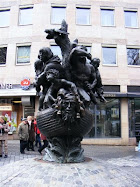
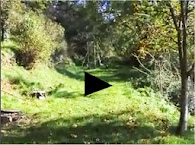
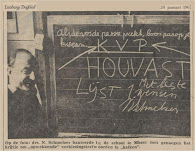

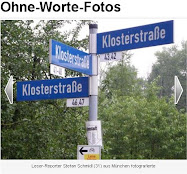
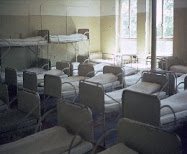






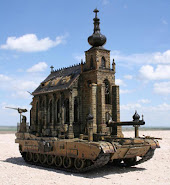
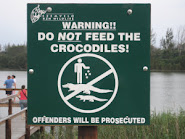


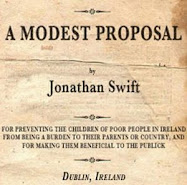


Geen opmerkingen:
Een reactie posten